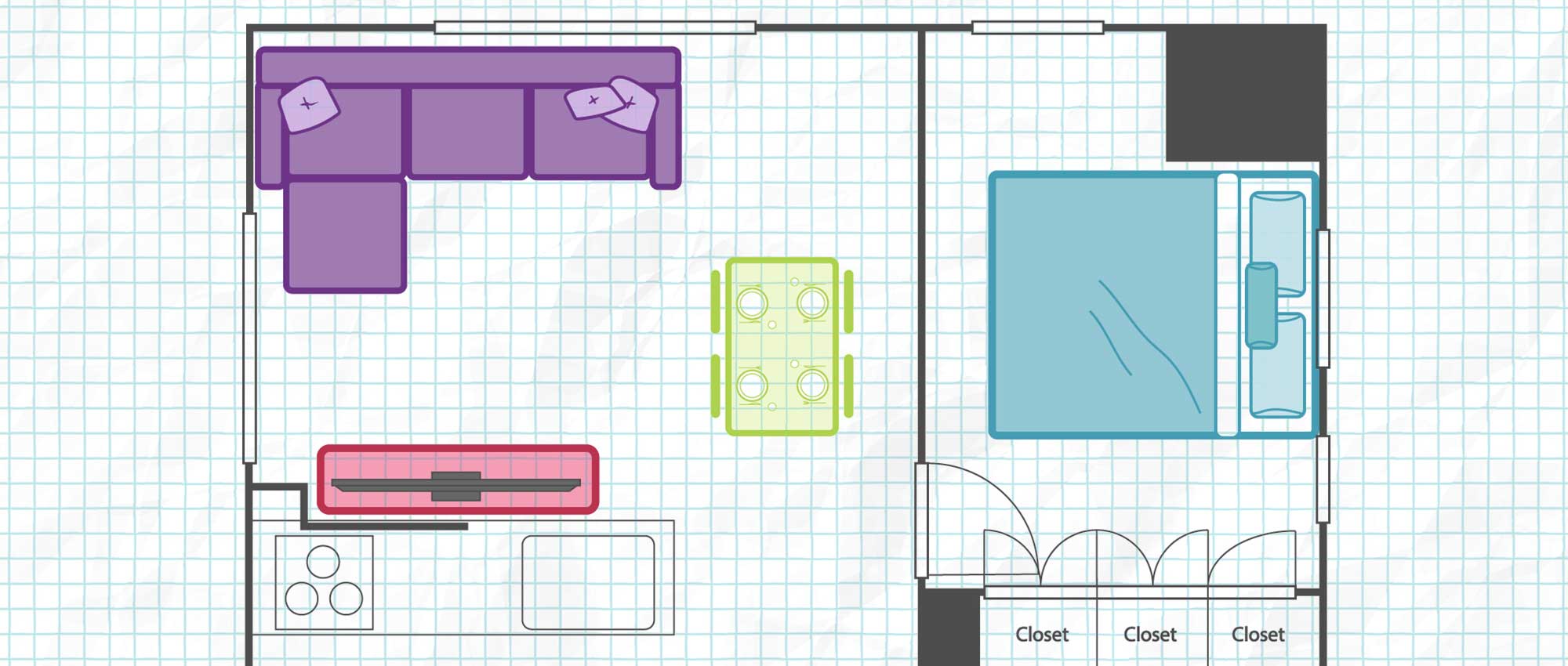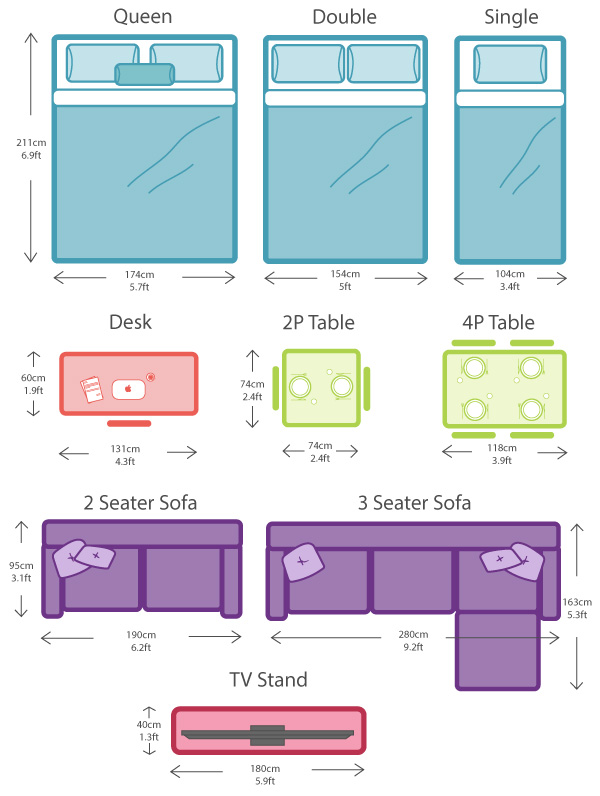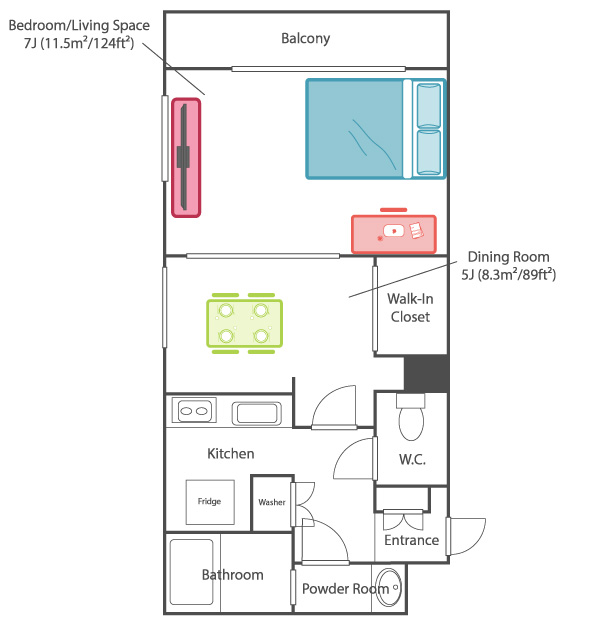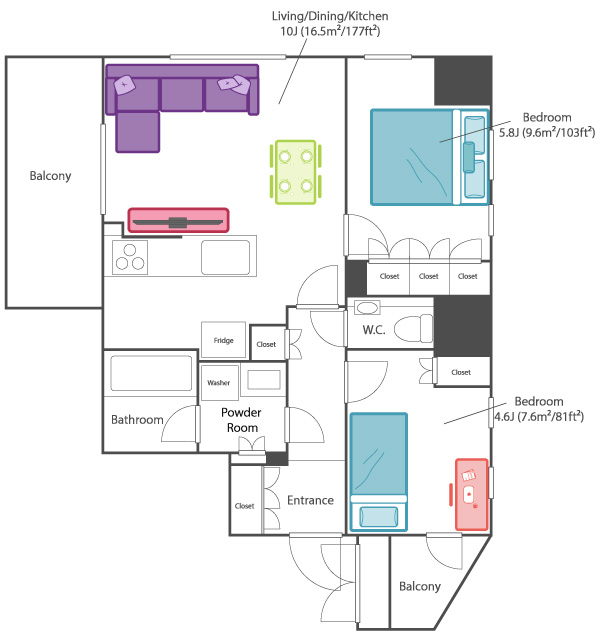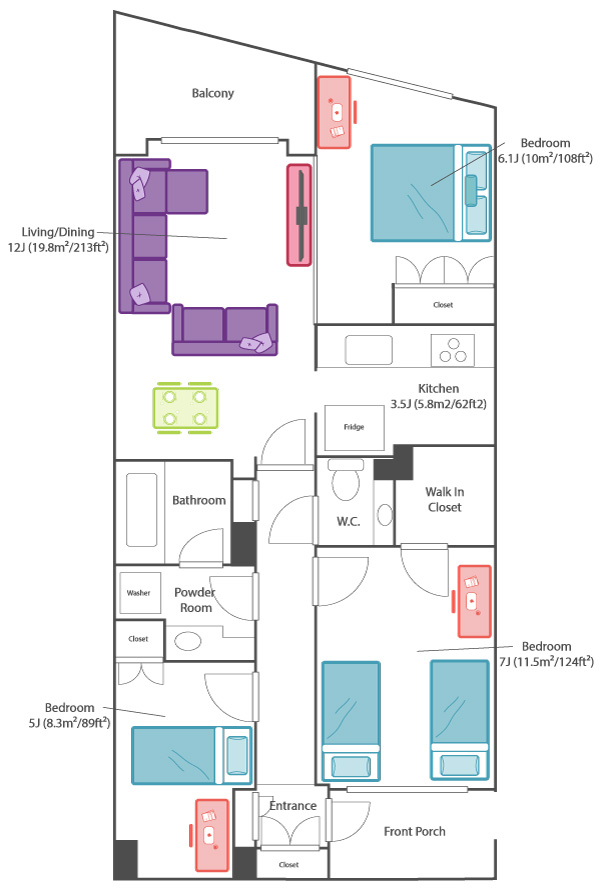Japanese Apartment Size Guide – With Diagrams!
We compare 5 common Japanese apartment sizes and layouts so you know what to expect.
Just how small are Japanese apartments?
Depending on the country you are from, you may be used to having plenty of space at your disposal. Although we strive to find apartments that suit your needs and lifestyle, it’s also important to have realistic expectations of rental properties in Japan.
First, a brief explanation of floor plans and measurements. The great thing about searching for a Japanese apartment is that real estate listings show a floor plan 99% of the time. This means you can have a rough idea of where you’re going to place your furniture, or what you will need to buy.
You may see terms such as “1DK” or “2LDK” on Japanese real estate sites. The number represents the number of bedrooms and the letters stand for Living, Dining, and Kitchen. These abbreviations can refer to both separate or joined areas and can be misleading, so we list our properties by the number of bedrooms only.
The floor plans on our website will usually display the room size in square meters or feet, however, some apartments will list the measurement as “J” or “帖”. This refers to the size of a traditional tatami mat and is approximately 1.653m² (17.79ft²).
So how much room do you actually need? To live comfortably, we recommend the following sized apartments:
- 25-38m² (269-409ft²) for a single person
- 38-50m² (409-538ft²) for 2 people (couples)
- 50-70m² (538-753ft²) for a family of 3
- 70+m² (753+ft²) for a family of 3 or more
However, unless you’re an architect it can be very difficult to imagine how much space you’re going to be getting, so let’s take a look at some real apartment plans.
Size Guide
We’ve furnished the layouts below with five basic items – beds, desks, dining tables, sofas, and tv stands.
To make it easy for you to visualize and compare, the furniture measurements are the same (or approximately same) as the following IKEA products: bed frame (single, double, queen), desk, dining table (2 person, 4 person), Sofa (2 seater, 3 seater), TV stand.
Common Japanese Apartment Sizes and Layouts
Apartment 1: 1K / Studio (27m² / 290ft²)
(View Studio / 1K Apartment Listings)
Properties of this size are most suitable for a single person with minimal belongings.
Apartment 2: 1DK / 1 Bedroom (35m² / 380ft²)
(View 1 DK / 1 BR Apartment Listings)
Offering a separate kitchen, dining, and bedroom/living space, this apartment is great for a single person or cozy couple.
Apartment 3: 1LDK / 1 Bedroom (46m² / 493ft²)
(View 1 LDK / 1 BR Apartment Listings)
With enough room for a separate living and dining area, this apartment is perfect for a couple.
Apartment 4: 2LDK / 2 Bedroom (56m² / 607ft²)
(View 2 LDK / 2 BR Apartment Listings)
A family of three can live quite happily in a 2 bedroom apartment with a total size of 50m² (164ft²) or more.
Apartment 5: 3LDK / 3 Bedroom (78m² / 835ft²)
(View 3 LDK / 3 BR Apartment Listings)
If you are a family of three or more, you will live most comfortably in an apartment with at least 70m² (230ft²) of space.
Looking for something bigger?
Check out our listings for large Tokyo apartments over 80 sq. meters. We also have quite a few luxury Tokyo apartment listings you can explore if cost is not a limiting factor.
Furnishing Your Home
When furnishing your home in Japan, keep in mind the following:
1. Looks can be deceiving
Rooms look smaller when they are empty, and floor plans can have the opposite effect. Don’t let your eyes fool you, take measurements before moving.
2. Be selective about shipping
If you’re coming from overseas and have the option to bring your own furniture, consider leaving your more bulky pieces behind.
3. Try living Japanese
You may like to consider furnishing your room the Japanese way, particularly if you are renting an apartment with a tatami room.
4. Less can be more!
Finally, although you may be used to having more space overseas, living in a small apartment is not necessarily a downgrade. They are easy to clean, stop you accumulating too much clutter, and are cheaper to furnish and maintain.
We hope you have found this article helpful!
Read our other articles for advice on renting in Japan, view properties, or contact us to discuss your upcoming move.
